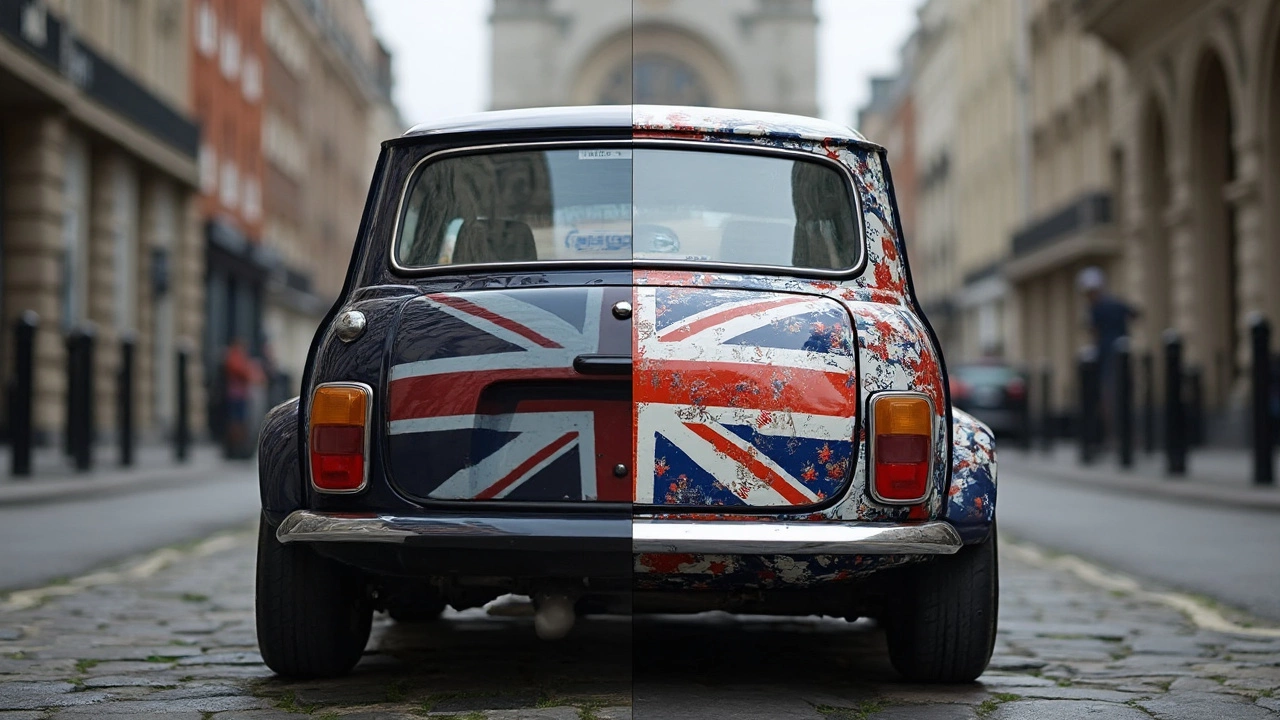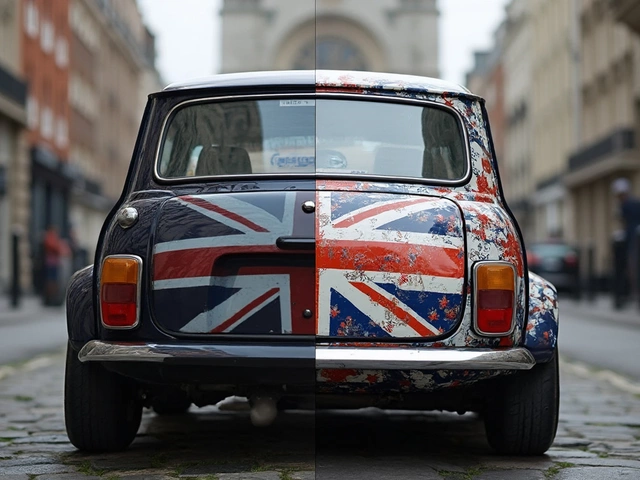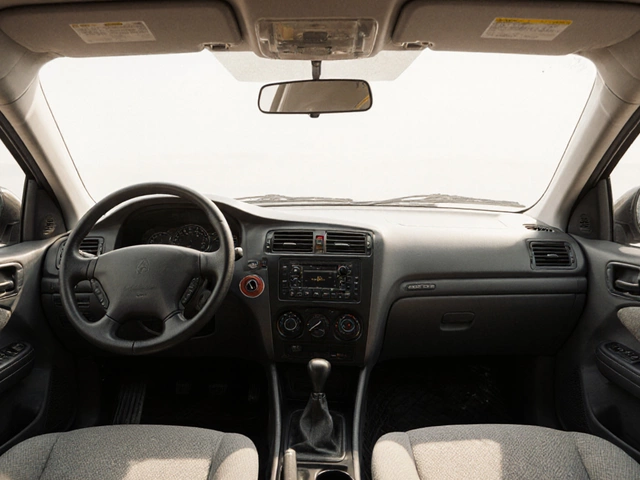Ever walked through a parking lot and caught yourself staring at an awesome design on the back window of somebody's car? Maybe it’s a racing stripe, a funny quote, or a logo so sharp it looks painted on. Sometimes it’s even a simple band sticker slapped beside a pile of others. But did you know there’s a big difference between what we call 'decals' and 'stickers'? Most people mix up the terms, but knowing the difference can save you time and money—especially if you want your car to look pretty slick for years, not months.
What Makes a Car Decal Different from a Sticker?
Let’s get real specific. Both decals and stickers stick to things, but that’s where their similarities end. A car decal is typically made from vinyl, and it’s designed for long-term use outdoors. These are the things you’ll see that look like they’re part of the car’s paint job—a classic flames effect running down the side or a minimalist white logo on the back window. What makes decals stand out? They’re usually cut right to the shape of the graphic, with no clear or solid background. When you apply one, only the design itself goes on your car, so it looks way more professional and seamless.
Stickers are the everyman of the adhesive world. They’re printed, often on paper or a thinner plastic, with the design sitting on a square, round, or custom shape. You stick a sticker on, and you see the whole background, whether it’s white, clear, or colored. They’re quick and cheap, used everywhere from water bottles to laptops, and yes, car bumpers—think election slogans or band logos you get in a merch bag. But they’re not built to survive the elements for long. Sun can fade them, rain can peel them, and you might find yourself scraping off sticky residue long before the joke stops being funny.
One thing people get wrong? Thinking 'decal' is just a fancy word for a 'sticker.' It’s not. Check out car forums or official dealer sites, and you’ll see decals popping up as a real product category. In fact, the auto industry is estimated to spend close to $1 billion annually on just vehicle graphics and wraps, which absolutely count as decals, not just stickers.
Materials, Lifespan, and Cost: What to Expect
The kinds of materials used are a dead giveaway for what you’re dealing with. Most car decals use high-quality vinyl, the kind that can last up to 8 years outside—even in tough weather. These are flexible, resist water, heat, and UV rays, and come off clean with a bit of heat or special remover, leaving your paint job safe underneath. A good decal will even resist those micro-scratches from a brush car wash. Ever notice a neighbor’s custom stripe still looks new after a couple winters? That’s vinyl decal technology doing its job.
Stickers, by contrast, come in all forms. You’ll find some made from vinyl, sure, but often for indoor use or short-term promotion, they’re plain paper with a basic adhesive backing. Toss one on your rear window, forget about it through a hot summer, and you’ll likely find it bubbling, peeling, or faded to nothing in a few months. That’s why most car show regulars avoid stickers for anything permanent—even if they’re cheaper up front. An average custom decal might cost $10–$50 depending on complexity and size, but stickers usually run a couple bucks at most.
If you’re curious about the details, here’s a comparison you might find helpful:
| Feature | Car Decal | Sticker |
|---|---|---|
| Material | High-quality vinyl | PVC, paper, low-grade vinyl |
| Lifespan (outdoors) | 3-8 years | Few months to 1 year |
| Weather Resistance | Excellent | Poor to fair |
| Application | Layered, requires transfer tape | Peel and stick |
| Removability | Leaves little or no residue | Often leaves residue, tears |
| Cost (approx.) | $10–$50 | $1–$10 |
So if you want your message or look to last, it's smart to go for a car decal instead of a sticker, even if the sticker’s price tag looks tempting.
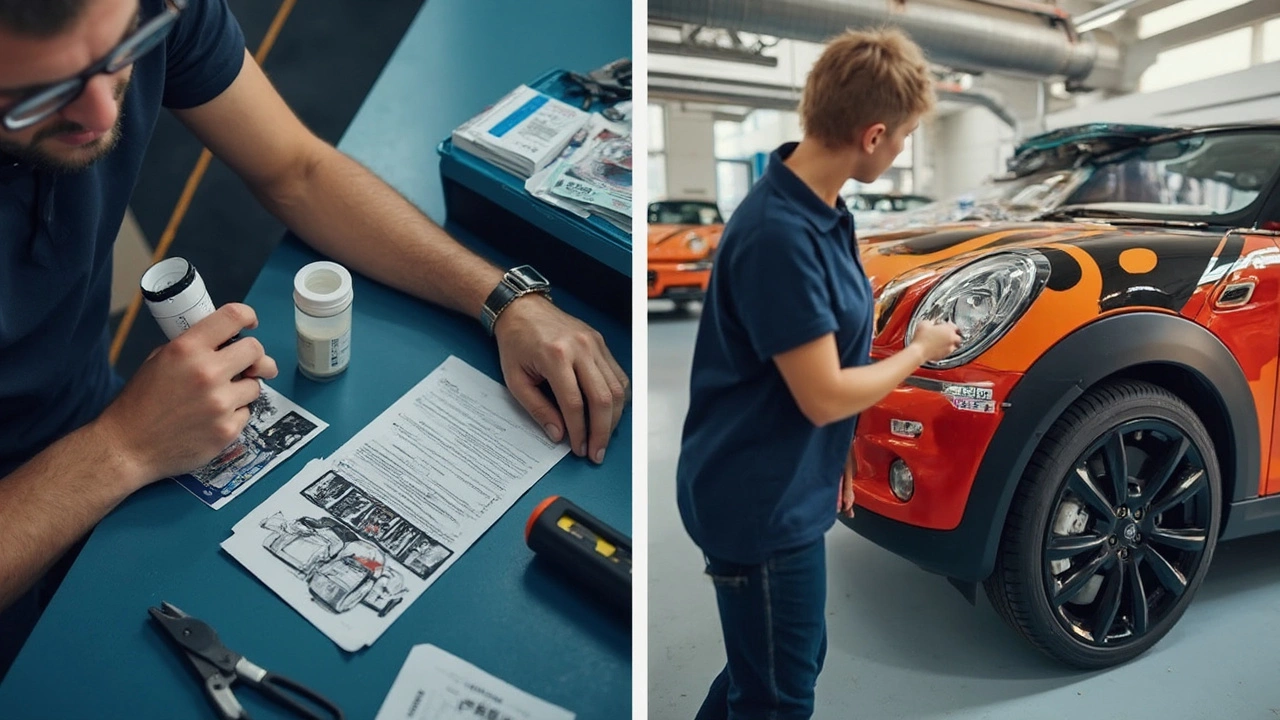
The Right Way to Apply Each: Decal vs Sticker
Ever seen someone trying to slap on a bumper sticker unevenly, only to peel it off and try again, resulting in a wrinkled mess? Yeah, stickers are “peel and stick,” but that’s not always foolproof. With larger stickers especially, air bubbles and wrinkles can haunt you if you rush it. The adhesive on stickers is simple—once it touches a surface, it’s committed. You get maybe one try to get it lined up right. If you misjudge, you could end up scraping with a credit card or worse, using your fingernails until there’s gunk everywhere.
Decals, especially high-quality vinyl ones, come with their own little tool—called transfer tape. You don’t just peel and slap; you use the tape to get the design off the backing, smooth it out perfectly on your car, and then gently pull the tape off so only the graphic remains. It’s like a temporary tattoo for adults (except this one might outlast your next three cars). Car pros and detailers swear by using a plastic squeegee to smooth out bubbles and make sure the decal gets a good bond with the surface. If there’s a curve or seam on your car, you can even heat up the vinyl a bit to help it stretch and mold, hugs the body like it was always meant to be there.
Here’s how most folks tackle each job:
- Decals: Clean the spot with isopropyl alcohol. Dry thoroughly. Align using the transparent transfer tape, press firmly using a card or squeegee, then peel the tape away. For big decals, use some painter's tape to 'hinge' it in place first.
- Sticker: Wipe the area, peel off the backing, and press it down. Use your thumb or a card to press from the center outward, minimizing bubbles. If you mess up, not many stickers survive being peeled and reapplied.
One tip: Always try decal installs on a warm day, between 60°F and 80°F. Too cold, and the adhesive doesn’t grab. Too hot, and it gets gummy before you align it. Emily’s personal hack: with big decals, mist the area with a mix of water and a drop of dish soap—the decal can 'float' while you nudge it perfectly into place before squeegeeing the water out. Works like a charm.
Removing and Replacing: Which Option Wins?
Think you’ll want to remove your design someday? Maybe you want to sell your car or just refresh your style. Here’s where the decal-sticker divide gets even sharper. High-quality car decals are engineered to come off clean when you use a little heat, like with a hair dryer. The vinyl softens, and you can peel up a corner and remove it in strips—usually with little or no residue left behind. For really stubborn bits, there are special adhesive removers out there that won't destroy your paint. You can find countless YouTube videos of folks swapping out their old racing stripes for new, with zero damage to the clearcoat underneath.
Stickers can be another story. If they've baked in the sun, their adhesive can harden like old gum. Peeling them might leave white paper shreds or that sticky goo that collects dust for the rest of your car's life. Sometimes, the only way off is with harsh scraping and acetone, which could risk your paint if you’re not careful. I’ve seen people resort to razor blades or even plastic ice scrapers, with mixed success. Trust me, you don't want that drama on your back window or fender.
Regular removals? Decals win. And if you’re putting on new graphics every season—think holiday themes or special events—investing in quality decals saves a headache. Some vinyl manufacturers even claim their premium material can last through car washes and pollution for years, and then pull off in minutes when you finally want a change.
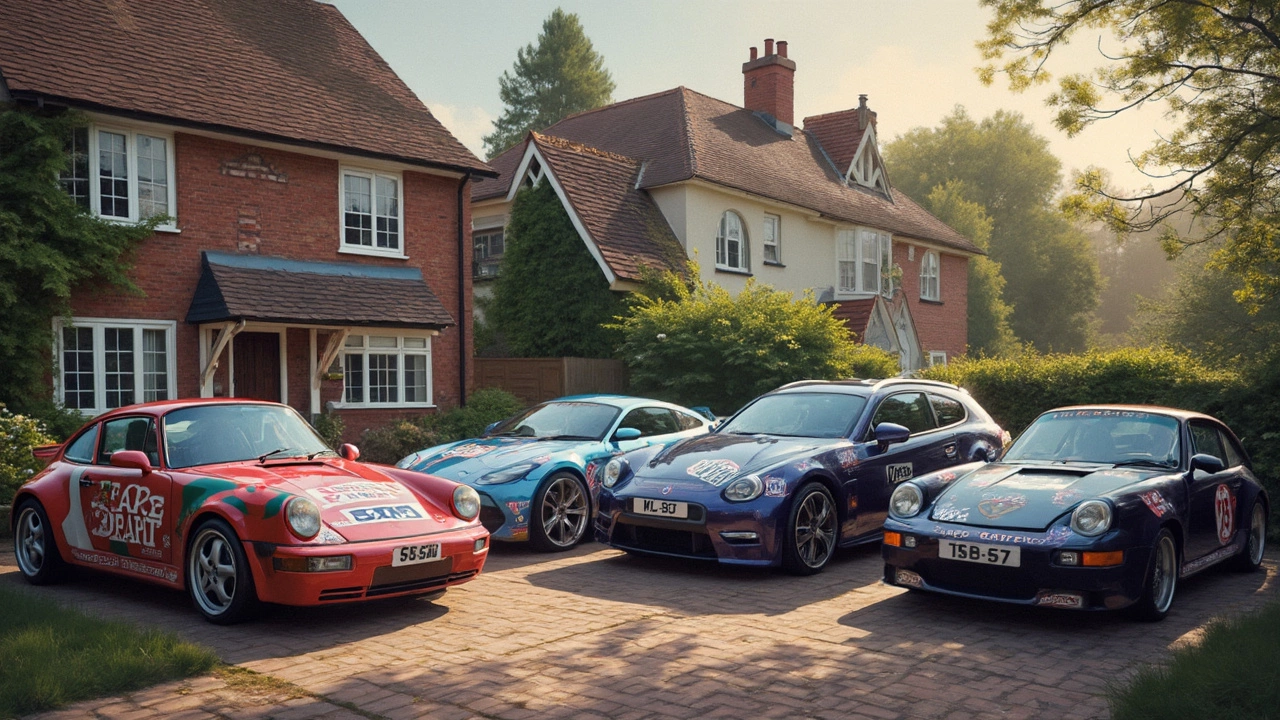
Personalization, Trends, and What to Choose
People love making their cars reflect their mood, their loyalties, or even just their sense of humor. There’s a world of options out there: club logos, cartoon figures, pet memorials, or your favorite sports team. While stickers are fast and cheap (and sometimes you just want to slap a snarky comment on your bumper for a few months), decals offer next-level possibilities. Think full vehicle wraps turning a regular sedan into a faux race car, or precision-cut quotes that look like a custom paint job. You can even design your own online and have it cut and shipped in days.
What’s hot right now? A lot of car owners are skipping the old-school bumper stickers for minimalist window decals, either in black or white. Instagram handles, TikTok QR codes, or custom art for side panels are popping up everywhere. Another trend: 'ghosted' or matte decals, almost invisible until light hits them just right. Brands like 3M and Avery Dennison offer ultra-durable films, promising color fastness and no fade, even if you park in full sun every day. One viral fact: in 2023, over 64% of car enthusiasts polled preferred decals over stickers for permanent customization—that’s up from under half just a few years ago.
Choosing between a sticker and a decal often comes down to what you want your message to say about you. Is it a short-term thing, like supporting a political campaign or showing off at an event next weekend? A sticker’s just fine. Looking for something to last the life of your lease or longer? A decal’s your best friend. Pro tip: Always ask the seller about outdoor durability and removability, or check product reviews. It might take a few extra bucks up front, but your ride—and your future self—will thank you later.

